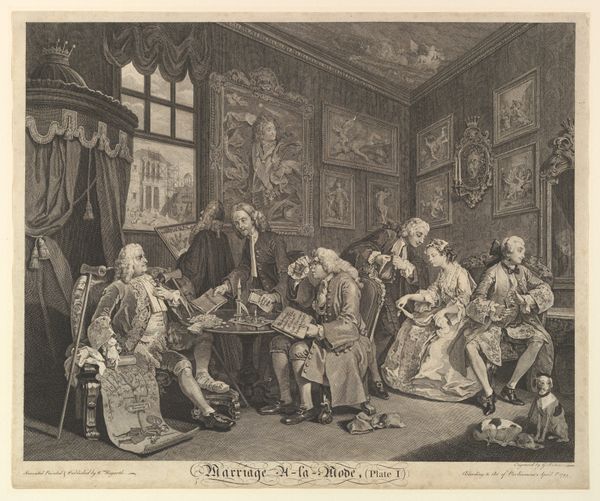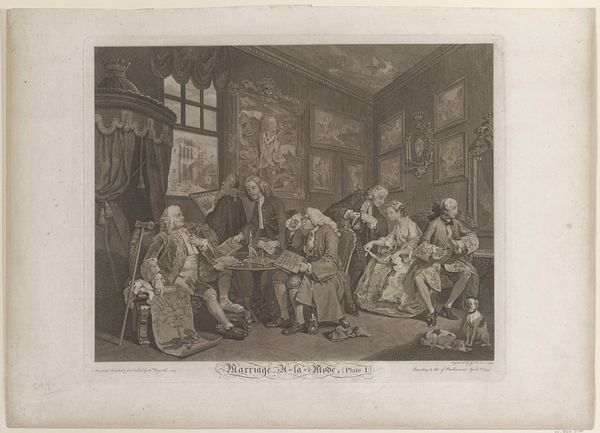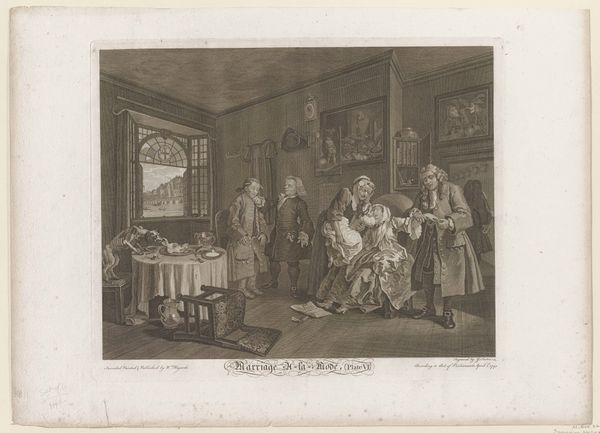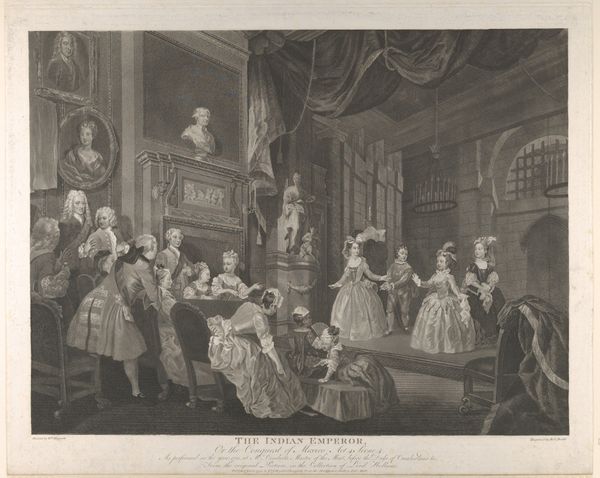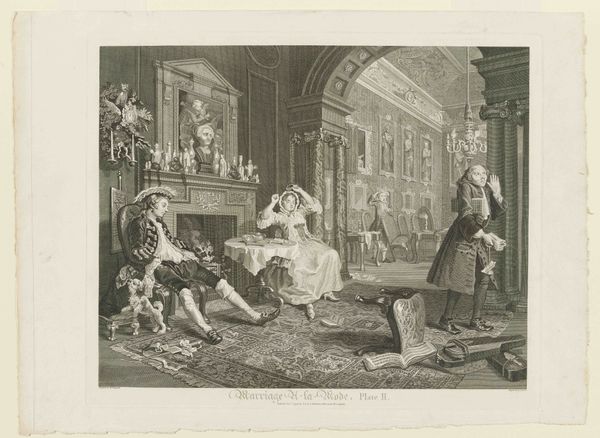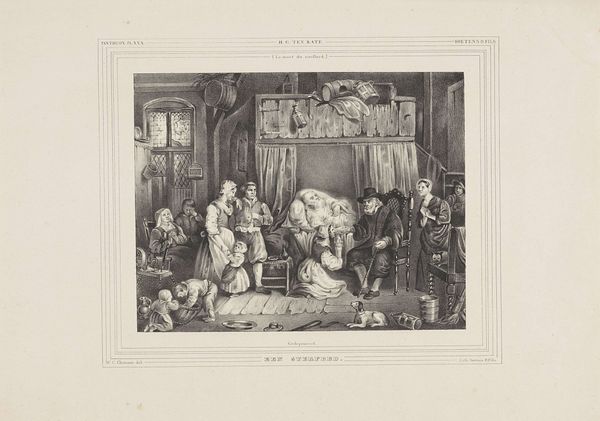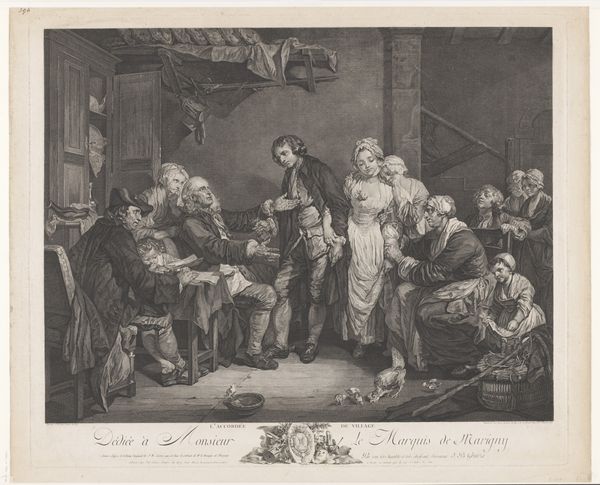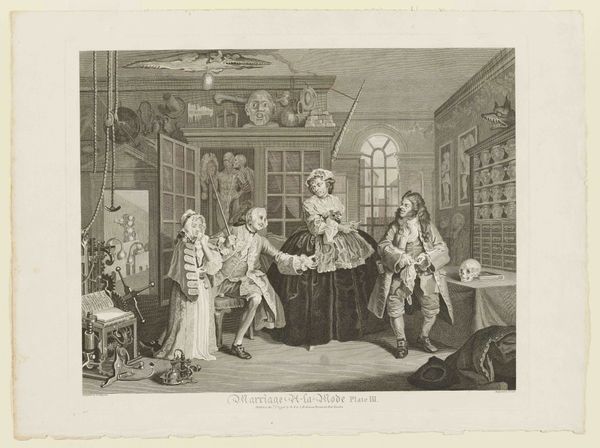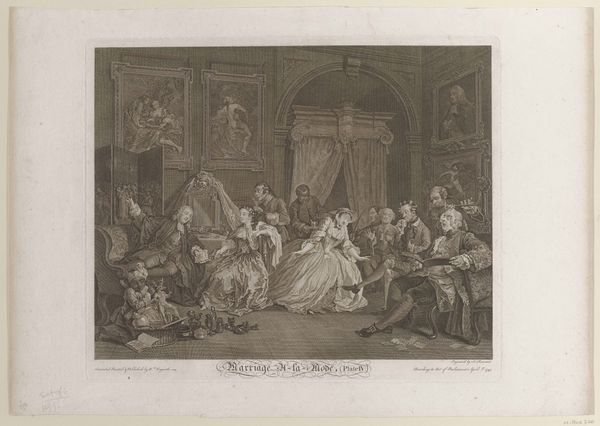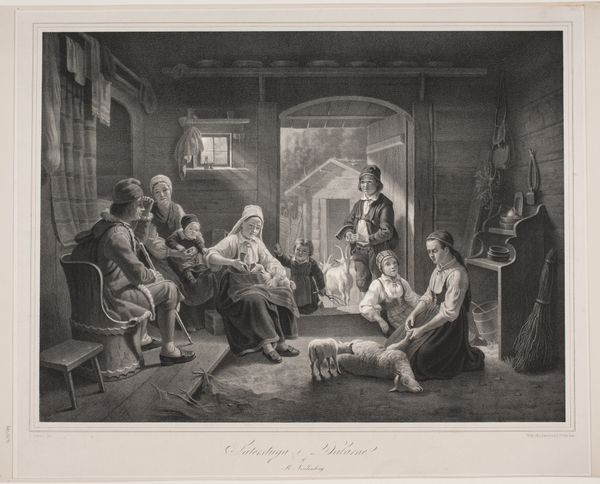
Dimensions: 15 1/16 x 18 1/2 in. (38.3 x 47 cm) (plate)
Copyright: Public Domain
Curator: Welcome. Today, we are looking at "Plate I from Marriage A-La-Mode," an engraving made by Anonymous, sometime between 1796 and 1797, now residing here at the Minneapolis Institute of Art. What are your initial thoughts? Editor: Chaos. The composition feels deliberately cramped, the figures jostling within this richly decorated interior. The density and detail almost overwhelm the eye. Curator: The scene certainly aims to convey a sense of social tension. Let's consider the process of creating such a detailed print. Engravings like this required skilled labor, precise tools, and a market for distribution. The prints themselves became commodities circulated amongst a burgeoning middle class. Editor: I see it primarily as a masterful arrangement of forms. Observe how the artist utilizes contrasting light and shadow to sculpt the figures and architecture. Notice how the curves of the paintings, the furniture, and the figures interplay, guiding the eye across the scene in a baroque rhythm. Curator: The baroque influence is notable, especially considering the critique embedded within the image. The marriage contract being presented underscores the commodification of relationships within the aristocracy. Their wealth and social standing dictated even their personal affairs. This artwork exposes that through detailed, material production. Editor: True, the subject matter does highlight social imbalances, but it's the formal structure, not just the content, that carries meaning. The mirrored image in the background and the disarray in the composition all suggest a deeper unease. There’s a very fine, and knowing, use of dramatic irony displayed with technical print precision. Curator: It’s interesting to consider that technical skill displayed might have come at the expense of unacknowledged or undervalued labor. Whose hands actually engraved this, and what were their working conditions? How was the print distributed, and to what economic strata? Editor: Regardless of the means of its production, the artwork achieves a rare synthesis of form and content, where visual complexity enhances narrative impact. I'm still captivated by the arrangement of its many components and layers of social satire through visual form. Curator: Agreed. Considering both its material origins and artistic rendering only enriches one’s appreciation. Thank you for your time.
Comments
No comments
Be the first to comment and join the conversation on the ultimate creative platform.

